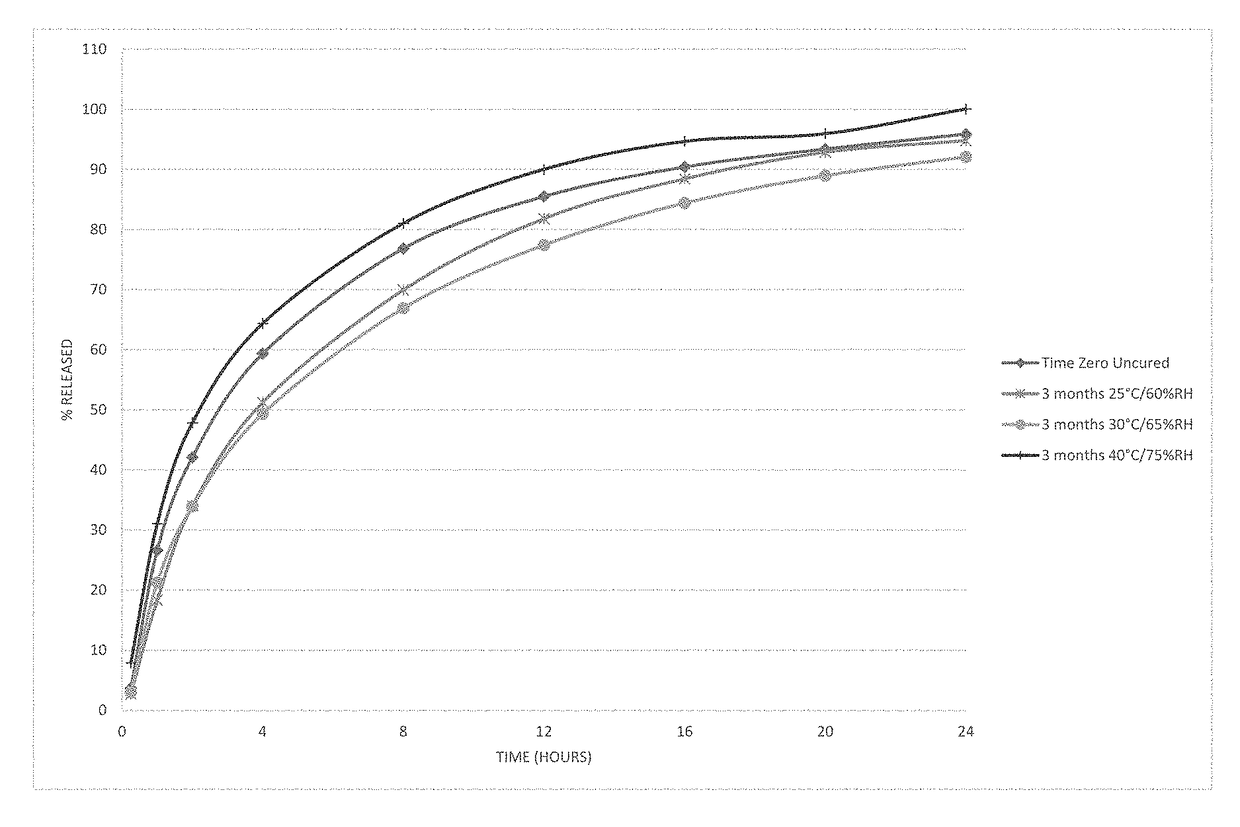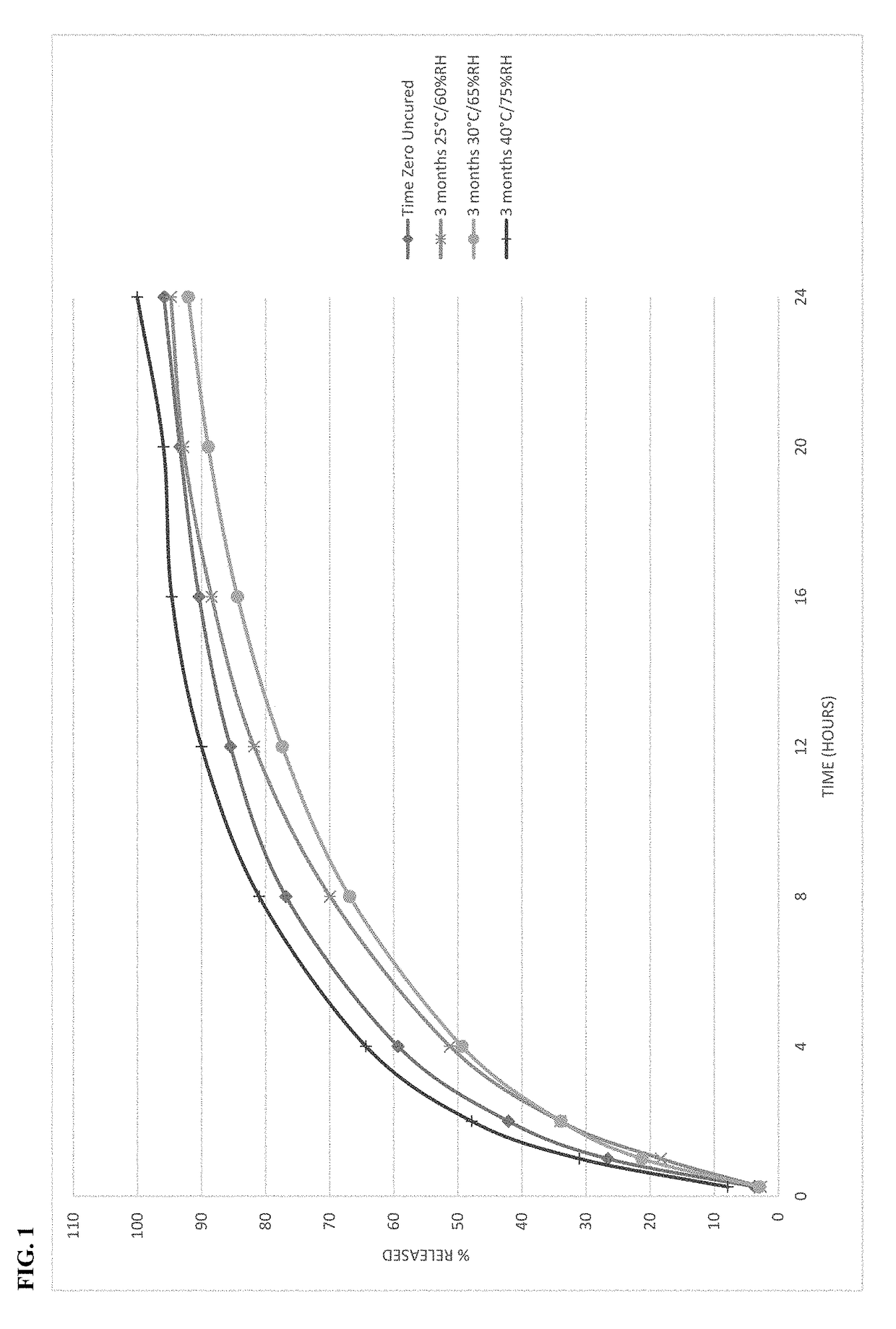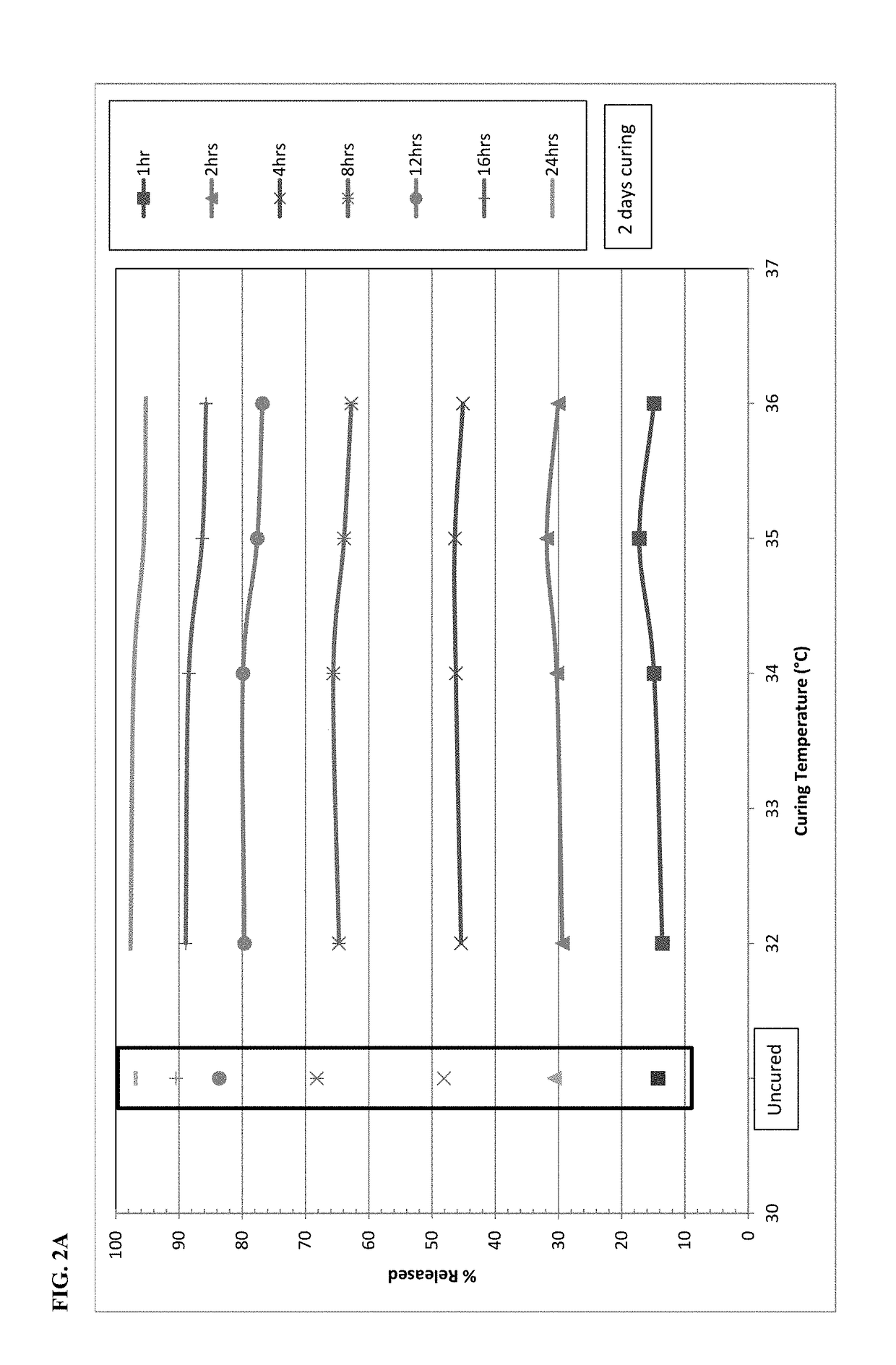Process of making stable abuse-deterrent oral formulations
a technology of oral formulation and stable absorption, which is applied in the direction of capsule delivery, oil/fat/waxes non-active ingredients, and heterocyclic compound active ingredients, etc. it can solve the problems of increased exposure, high misuse rate of opioid formulation, and increased exposure of patients or caregivers, so as to improve the stability of dissolution
- Summary
- Abstract
- Description
- Claims
- Application Information
AI Technical Summary
Benefits of technology
Problems solved by technology
Method used
Image
Examples
example 1
of Uncured Microspheres at Different Conditions of Temperature and Humidity
[0104]Microspheres containing oxycodone, myristic acid, beeswax, carnauba wax and stearoyl polyoxyl-32 glycerides were produced using spinning disk atomization as described above. The microspheres were blended with colloidal silicon dioxide and magnesium stearate and machine encapsulated to form capsules. Capsules were packaged in high-density polyethylene bottles and placed in stability chambers according to ICH conditions; long-term (25° C. / 60% RH), intermediate (30° C. / 65% RH) and accelerated (40° C. / 75% RH) conditions were used in the study. The dissolution profile of the capsules was determined at the time of manufacture and periodically while on stability. The % drug released as a function of time in dissolution is shown in FIG. 1 at time zero and after storage for 3 months at all 3 ICH stability conditions.
[0105]The behavior of the microspheres was unexpected on stability. The dissolution profile of th...
example 2
ment of Inversion Temperature
[0106]On the basis of stability data shown in Example 1, the dissolution behavior of microspheres containing oxycodone, myristic acid, beeswax, carnauba wax and stearoyl polyoxyl-32 glycerides was investigated at temperatures falling between 30° C. and 40° C. Specifically, the microspheres were exposed to elevated temperatures between 32° C.−36° C. after 2 days (48 hours) and 6-7 days. FIGS. 2A and 2B display the impact of curing temperature at each individual dissolution time point. FIG. 2A shows the impact of curing for 2 days and FIG. 2B shows the impact of curing for 6-7 days. Both graphs also show the dissolution results for the uncured formulation as a control. After 2 days of curing at 32° C.-34° C., there is only a slight reduction in dissolution versus the uncured formulation. A further drop in dissolution is generally observed with increasing temperature from 34° C. to 36° C., especially at the 8-hour and longer time points.
[0107]Changes after ...
example 3
age Curing Process
[0109]Based on the dissolution behavior for microspheres containing oxycodone, myristic acid, beeswax, carnauba wax and stearoyl polyoxyl-32 glycerides after exposure to different temperatures, studies to implement a curing process were conducted. The hypothesis was that curing at a temperature above 25° C., but below the inversion temperature (35-36° C.), would improve the dissolution stability of the microspheres when stored at ICH long-term conditions (25° C. / 75% RH). The process consisted of a single-stage (ie, a single temperature) and a duration of 30 days. For these studies, microspheres were blended with colloidal silicon dioxide and magnesium stearate and encapsulated prior to curing. Uncured microspheres that were similarly blended and encapsulated were also tested as a control.
[0110]The dissolution stability behavior of uncured capsules that were stored at 25° C. / 60% RH is shown in FIG. 3A. A relatively large drop in dissolution is observed. Dissolution ...
PUM
 Login to View More
Login to View More Abstract
Description
Claims
Application Information
 Login to View More
Login to View More - R&D
- Intellectual Property
- Life Sciences
- Materials
- Tech Scout
- Unparalleled Data Quality
- Higher Quality Content
- 60% Fewer Hallucinations
Browse by: Latest US Patents, China's latest patents, Technical Efficacy Thesaurus, Application Domain, Technology Topic, Popular Technical Reports.
© 2025 PatSnap. All rights reserved.Legal|Privacy policy|Modern Slavery Act Transparency Statement|Sitemap|About US| Contact US: help@patsnap.com



